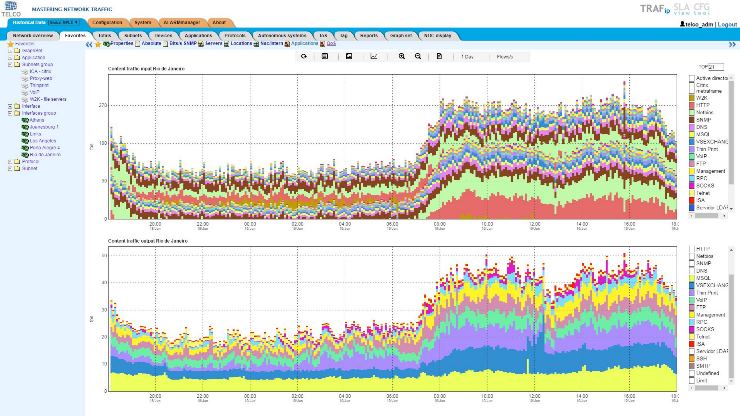With the continuous evolution of the technology, long-distance communications are increasingly present in everyday business life. Most times, such long-distance communications are often provided through social networks, where the user has greater interaction with those who want to communicate. But how can we deal with this in a corporate environment? Obviously, many companies choose to provide full freedom to users, however responsibly. But what action you should to take when you need to send that e-mail with several attachments for an important customer and it is clearly noted there’s a delay of several minutes for this email to go out of your mailbox, and in addition, there is a suspicion that there are several users simultaneously connected on social networks? Unfortunately, it is an awkward task to investigate the users who are making inappropriate network usage and thereby affecting the available traffic for use in your company. For many times, the network of a company resembles to a traffic lane of cars. The problem is when there are other vehicles in front of your business that should not be using the traffic available for other purposes, as illustrated below:

The best way to protect the use of your network for work purposes in your business is to make use of what is called QoS (Quality of Service). But what is quality of service?
What is Quality of Service?
Note that in the above illustration, there is only one traffic lane. Now, imagine if there was another traffic lane exclusively for use by your company. It would be like this:

This is what is called Quality of Service, which means to provide a unique network bandwidth for relevant applications to the company, prioritizing what is needed and lowering the priority of other utilities. With this you can ensure that your network will be available when required for work purposes.
Analyzing QoS Policies
However, in a corporate environment it’s not simply make use of the Quality of Service. It is necessary to visualize if what is being used directly reflects what is intended. But it’s not just defining a band empirically. If the reserved bandwidth is too large, other applications with lower priority will suffer unnecessarily. Also, if by the other hand the bandwidth is too small, it will not solve the problem.
Moreover, configuration errors can occur and applications with no priority may travel through this reserved bandwidth. As when there is an exclusive traffic track for use of public transportation and it is being used by regular traffic. This way, even understanding and taking the right decisions, the benefits are not achieved as expected. And because of it, much time can be lost until someone decides to audit the situation and find these errors. But it is not just that. Also over time, consumption of applications may change, leading to the need for adjustments in those band settings. For these reasons, it is crucial to constantly analyze which components present in your network are consuming more data traffic, and which ones are causing any overload.
Solution for identify misconfigured QoS policies
Considering these and other needs, Telcomanager makes available to the market a powerful tool that will assist in the analysis and monitoring of the consumed network traffic in your business, called TRAFip. With the TRAFip tool, it’s possible to continuously monitor what is actually traveling in each defined QoS band over the network. The analysis is made possible by an intelligent collection mechanism that allows capturing all relevant information from the environment of your company. You can view through friendly graphics that will ease the understanding for the user and enable accurate information on what is being used, and the possible actions to reverse something that is outside the plan.

For this, the TRAFip supports NetFlow technology that allows routers to communicate with TRAFip, which then aggregates and makes the various needed analyzes to present the data in a simple and organized way. Find out with Telcomanager what can be done to have control over your network traffic and ensure that all the investment is bringing good results. With smart and unique solutions of Telcomanager, this is possible. Contact us to discover a smarter way to use your data network, reducing costs and optimizing solutions.
 +55 (21) 3211-2223 info@telcomanager.com
+55 (21) 3211-2223 info@telcomanager.com